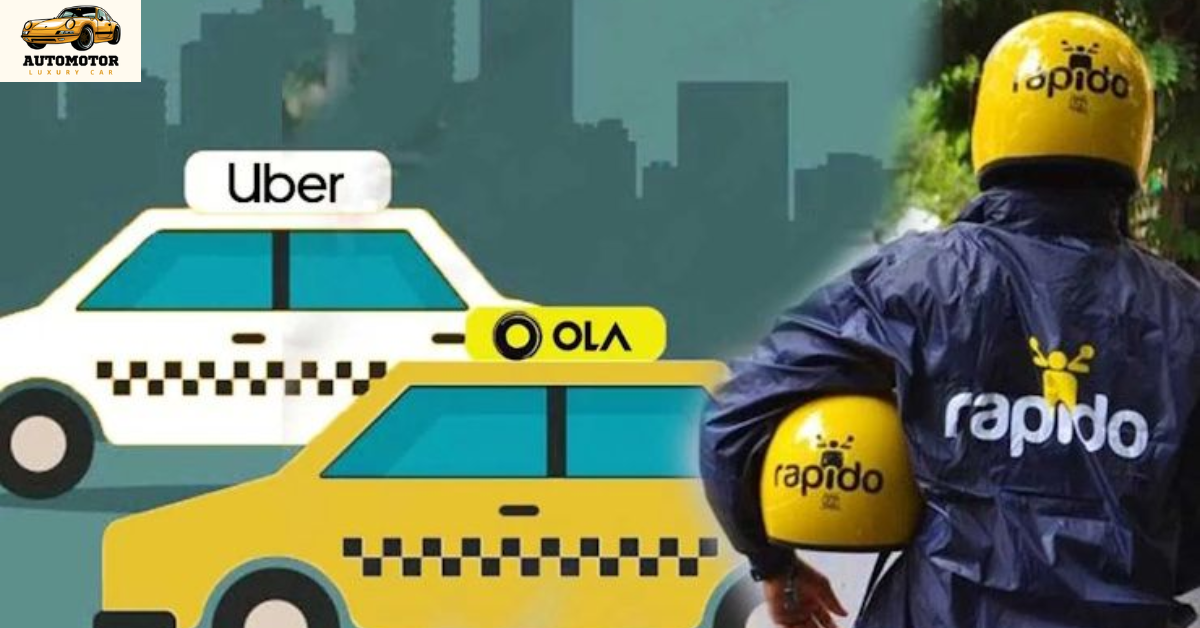India’s most popular ride‑hailing platforms—Ola, Uber, and Rapido—are increasingly facing scrutiny over fare policies that critics argue exploit users through hidden costs, unfair interface designs, and regulatory mismatches. Multiple investigations and high‑profile backlash suggest the trust passengers once placed in these apps is rapidly eroding.
🔍 1. Advance Tipping: Forced “Gratuity” or Customer Choice?
At the epicenter of the controversy is the recently introduced “advance tipping” feature—prompting users to pre‑tip drivers before a ride is accepted. Rapido rolled this out in 2023, Ola adopted it more recently, and Uber introduced similar prompts in April 2025.
While the platforms insist tips are optional, many users report that rides are significantly delayed or even ignored unless a tip is added—as though paying it becomes necessary to get matched quickly. Consumer advocates label it a dark pattern masquerading as a convenience, which pushes passengers to pay more under social or design pressure.
The Central Consumer Protection Authority (CCPA) has stepped in—issuing notices and summoning explanations from Ola, Uber, and Rapido regarding their tipping nudges, citing this mechanism as an unfair trade practice where gratuity becomes a hidden fare in effect. Consumer Affairs Minister Pralhad Joshi emphasized that a tip should be an appreciation, not a prerequisite for service.
💸 2. Drip Pricing and Hidden Charges
Beyond tipping, users report fare escalation through so‑called drip pricing: initial fares seem reasonable until additional charges appear in subsequent screens. These unexpected increments leave customers feeling locked in—even if they initially chose the basic, low‑cost option.
On Reddit, one Bengaluru rider described experiencing an auto ride quoted at INR 142–150 but was billed INR 400+ after the ride ended, owing to a “free upgrade” that quickly turned into a hidden surcharge. Another user recounted how Rapido’s tipping feature effectively becomes mandatory, adding 20–30% on top of the base fare—and that the tip often doesn’t appear on official invoices, which prevents expense claims or employer reimbursements.
Anti‑consumer design tactics, combined with poor visibility of final pricing, leave users frustrated and misled.
🏛️ 3. Regulatory Pressure and Driver Backlash
In Pune, the Maharashtra transport authority has asked the ride platforms to justify their fare calculations in light of the Regional Transport Authority’s (RTA) approved fare schedule—₹75 for the first 3 km and ₹25/km thereafter. By that formula, a 10 km ride would cost ₹249.50, well above the usual app‑quoted average of ₹175.
Driver unions, including the Indian Gig Workers’ Front, have responded sharply—many threatened to boycott Uber (and potentially others), demanding fares reflect state‑mandated slabs and protesting platforms that penalise drivers offering RTA‑compliant rates.
Pune saw severe disruptions: aggregators’ fares surged—some trips costing triple the usual app rate—and there were reports of intimidation and violence toward passengers and service drivers during strike action.
Meanwhile, the Maharashtra government has rejected a proposal to apply the standard “Cool Cab” fare model to app‑based services like Ola and Uber, arguing they operate under all‑India tourist permits and fall outside typical state regulation. A broader Aggregator Cab Policy remains in draft stage, holding out hope for future fare oversight.
🧭 4. Specifically for Autos: Shift to “Pay & Negotiate” Models
To cope with commission disputes and driver dissatisfaction, Uber has shifted to a subscription‑based model (zero commission per ride) in autorickshaw services across India. Under this system, the app connects passengers with drivers, suggests fares—but final pricing is negotiated offline. This mirrors the earlier system used by Rapido and local player Namma Yatri.
Critics argue this setup leads to non-transparent fare negotiations, and riders often end up paying more than the app‑shown estimate—or being forced to settle in cash, risking further overcharges.
👥 5. Voices from the Ground: User Discontent
User feedback across platforms has been overwhelmingly negative:
- A Bengaluru user on Reddit said: “Rapido’s auto prices are at least 25–30% premium… this forces consumers to book through Rapido … They tip starts at 30 rupees…”.
- Another warned: “Without adding a tip you’ll struggle to find a ride at all … they don’t include this in the invoice … tip is completely untraceable…”.
- Regarding Ola, one rider shared: “Fare shown around 190–200 … driver asked for whopping 380 … You and the driver must agree on the final price later.”.
These narratives reflect a deeper shift—the initial promise of app‑based fairness has eroded into chaotic, opaque pricing.
🧾 6. What It Means for Commuters & the Road Ahead
For riders:
- Stick to transparent fare models and scrutinize pre‑tips offered.
- Prefer rides with clear invoice breakdowns, and report suspicious fare hikes.
- In states like Maharashtra, follow evolving aggregator policy updates or approved fare schedules arriving soon.
For regulators:
- The CCPA and state transport authorities must enforce stricter rules on dark patterns and mandatory tip displays, ensuring that consumer choice remains voluntary.
- Implementation of unified Aggregator Cab Policies at the state level is urgent to bring fare transparency and fairness.
For platforms:
- Stop nudging customers toward optional tips under threat of service delay.
- Offer clear fare breakdowns upfront—including tips—so users see the total cost before confirming.
- Align platform incentives with fair pricing and customer trust, not hidden margins.
✅ Conclusion
What began as fast, convenient mobility through Ola, Uber, and Rapido has become entangled in tipping tricks, opaque fee layers, and regulatory tussles. Users across cities like Bengaluru, Pune, and Mumbai are demanding clarity and fairness. The CCPA investigation, driver strikes, and emerging aggregator policies reflect mounting pressure to fix fare practices.
